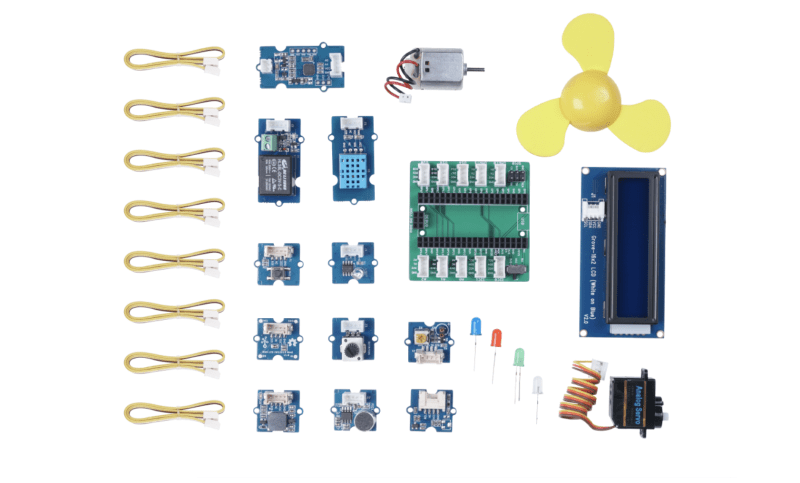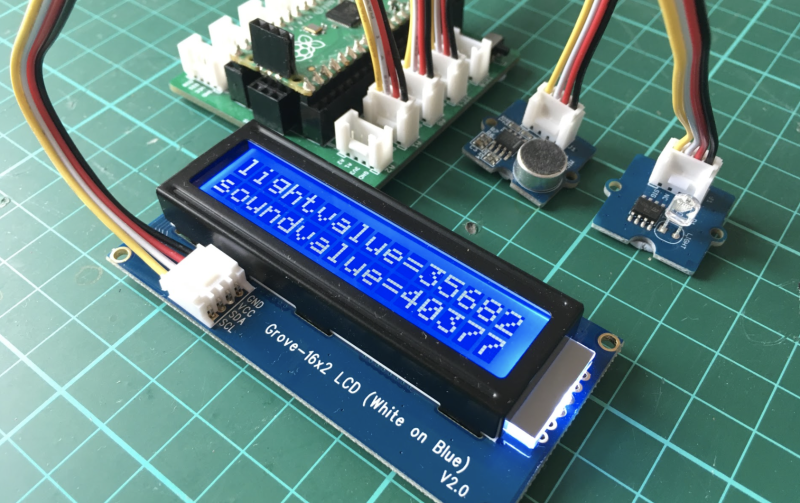At the heart of the Grove Starter Kit for Raspberry Pi Pico is a Grove Shield ($4). This board has ten different Grove Connectors: three analogue ports, two digital ports, three UART ports, and four I2C ports. It also has a 3 V/5 V power switch to adjust the voltage output, and a six-pin SPI interface.
Raspberry Pi Pico slots into the header on the Grove Shield and Grove parts are snapped straight into the white Grove connectors. This enables you to prototype projects quickly and easily.
You will need to have soldered pins on to your Pico (or you can pick up a pre-soldered Pico). But from that point on, you don’t need to solder parts or figure out circuits and jumper wires. You just connect the Grove part to the Grove Shield using one of the included Grove Universal 4-Pin cables. Grove itself says this “simplifies the learning system, but not to the point where it becomes dumbed down”.
Each Grove cable has four wires: typically one for power, another for ground, and two for input and output (the exact nature of each wire depends on the part it’s connected to; you can read more here.
This does, indeed, make it extremely easy to hook up components to Raspberry Pi Pico. And to that end, the kit comes with a wide range of parts to play with. There is an LED pack, RGB LED display, light sensor, sound sensor, rotary angle sensor, temperature and humidity sensor, passive buzzer, button, servo, mini fan (with DC motor), relay, and a 16×2 character LCD.
Learning curve
The Grove Shield for Pi Pico wiki page has a range of tutorials that use the parts found in the kit.
The tutorials use all the parts found in the Starter Pack and give a good overview of what you can do. You typically need to download a Python module for each part. And analysing the code will give you a good overview of what each component can do. We programmed the LCD to respond to light and sound; a fan and servo movement detector; and played around with lights, buttons, and the relay.
Thanks to the Python support files, introductory wiki tutorials, and the click-and-play nature of the kit, it is ridiculously easy to move from having an idea to getting it working.
There is an argument that replacing the pure jumper wires and breadboard with a custom connector removes part of the learning curve. And it’s hard to take a prototyped circuit and wire components directly to Pico so you remain attached to the Grove Shield and its ecosystem of parts. But, for the sheer joy of attaching a component and getting it to work, this is hard to beat.


Schreibe einen Kommentar
Du musst angemeldet sein, um einen Kommentar abzugeben.